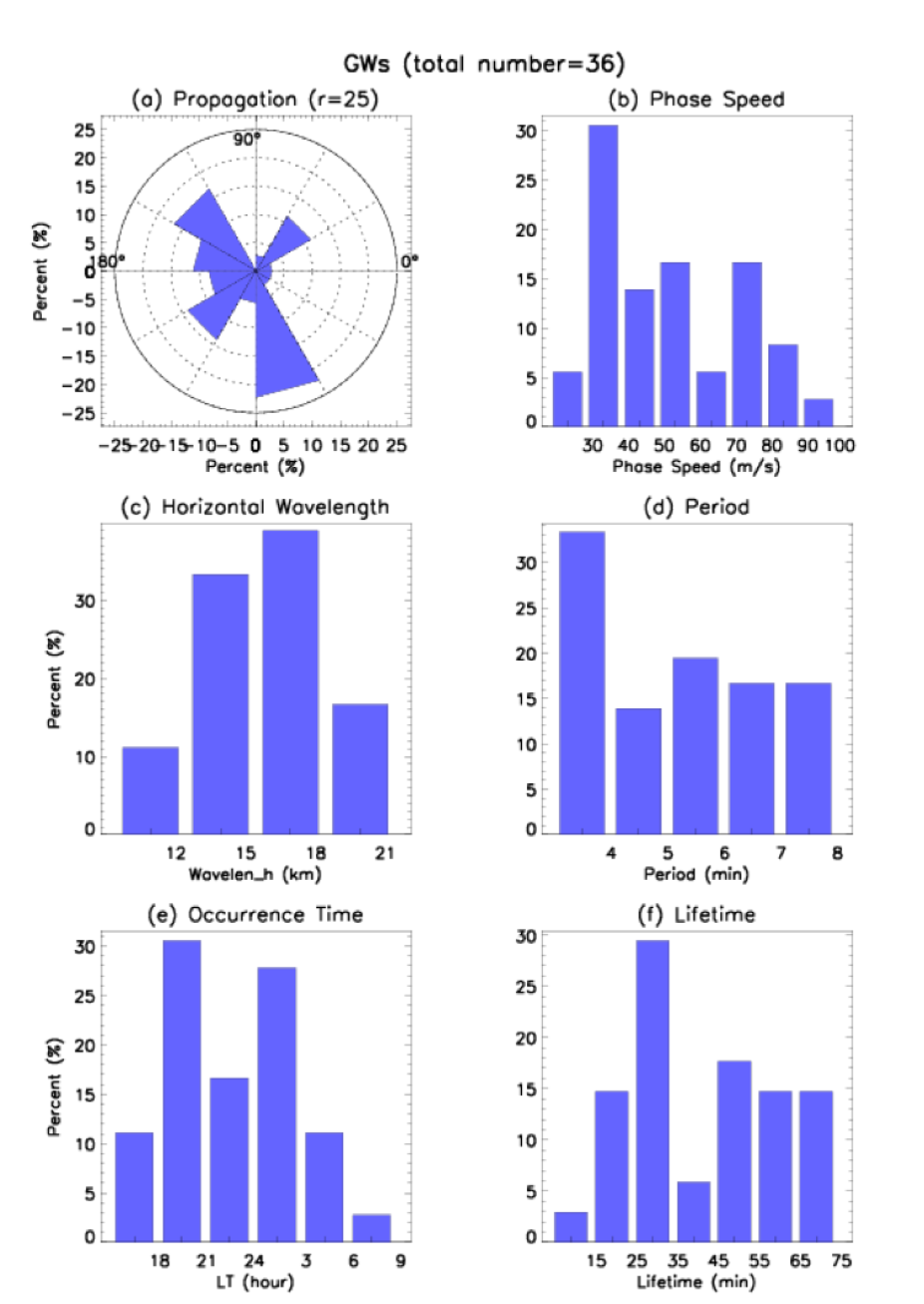Publication: JGR Space Physics; HAO Author: Qian Wu; Authors as listed in article: Jing Li, Tao Li, Qian Wu, Yihuan Tang, Zhaopeng Wu, Jun Cui
Observational datasets in the polar middle atmosphere are extremely valuable for understanding the polar dynamics and coupling between lower and middle atmosphere. Using the long-term datasets observed with an OH all-sky imager, a Fabry-Perot Interferometer at Resolute Bay observatory, Canada (74.7°N, 94.9°W), and Microwave Limb Sounder and reanalysis data, we study the characteristics of small-scale gravity waves (GWs) with the horizontal wavelength less than 20 km in the Arctic winter mesosphere during 2014-2016. Most of the GWs propagate nearly against the mesospheric and stratospheric winds, consistent with the wind filtering theory. A small amount (7 of 36 cases) of small-scale GWs in large regions (area >1/2 of the whole image) propagate nearly westward with smaller phase speeds, larger horizontal wavelengths and longer periods than those in limited regions.

Histogram of small-scale GWs’ parameters observed by All-sky OH airglow imager at Resolute Bay Observatory, including (a) propagating direction, (b) phase speed, (c) horizontal wavelength, (d) period, (e) occurrence time, (f) lifetime.
We also find that multiple GWs with different propagating directions occurred simultaneously only when the wind speed is much smaller than the GW phase speed. The observed small-scale GWs may be excited in the mesopause region, such as secondary wave generated by primary wave breaking, or a result of baroclinic instability processed in the stratosphere, and the interaction of planetary waves with the background winds. In addition, almost all of the small-scale GWs occurred in 2015/2016 anomalous winter, when both the strong El Nino-Southern Oscillation (ENSO) and anomalous Quasi-biennial Oscillation (QBO) happened. Further studies are needed to explore the mechanism of GW excitation and propagation.